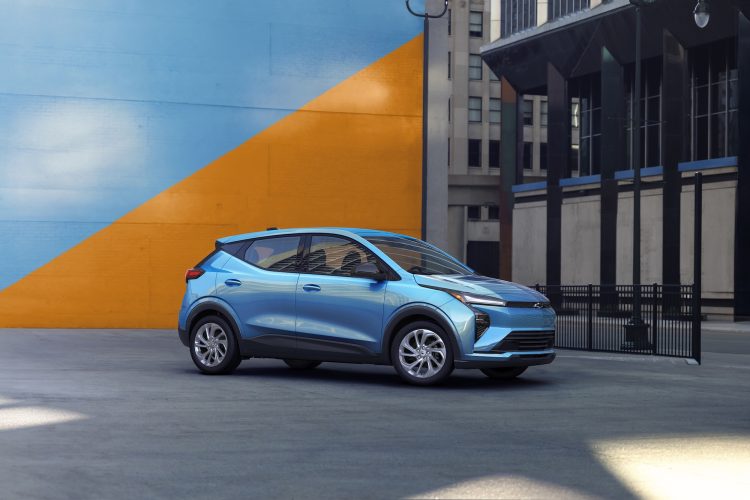TriplePundit • The Death (and Life) of the Electric Car

As TriplePundit marks 20 years as a newsroom, we’re reflecting on how the global sustainability space has evolved and changed, what we got right and what we didn’t, and what we can learn from all of it. Follow along with the series here.
Electric cars are commonplace now, but they took a long, roundabout journey to the U.S. market. Early electric vehicles were highly expensive to produce, and their primitive batteries only got a few dozen miles from a single charge. So, how did the EV go from near death in the early aughts to more than 10 percent of new U.S. vehicle sales this year? Read on to find out.
Who really killed the electric car?
The 2006 documentary “Who Killed the Electric Car?” chronicles the fate of the EV-1, the first mass-market electric vehicle produced by General Motors. As GM’s response to a new clean air mandate in California, the car was available on a lease-only basis beginning in 1996. GM halted production just three years later, after issuing only 1,100 leases. When the last leases expired in 2002, GM repossessed and destroyed its entire EV-1 stock, except for a scant few rescued by avid fans.
Though the EV-1 was marked down as a failure, GM was not the first, nor the only, U.S. automaker to fail at electric mobility. The first experiments appeared in Europe in the 1830s. By the time practical electric cars were introduced to the U.S. market in the 1890s, the seeds of the internal combustion revolution were already in motion.
Only a few EVs remained on U.S. roads by 1930. The oil crisis of the 1970s inspired another round of electrification activity, but few automakers took the bait. One of them was Florida-based Sebring-Vanguard, which produced about 2,300 micro-EVs for the commuter market between 1974 and 1977.
Despite the lack of interest among adults, electric mobility became wildly popular among children in the 1980s with the launch of the Power Wheels brand of battery-operated ride-in vehicles. Though just a toy, these pint-sized EVs racked up millions in sales over the years while demonstrating the key advantages of electric mobility over internal combustion engines. They are clean, quiet, non-polluting, simple to maintain, and easy to recharge at home.
The rebirth of electric mobility: Technology meets public policy
The EV field was open for the taking in 2005, but auto industry stakeholders still showed no interest in producing a cost-competitive EV for the masses. The California startup Tesla formally launched in 2003, but its initial co-founders Martin Eberhard and Marc Tarpenning were focused on the rarified market for two-seat electric sports cars. In 2004, Elon Musk joined as co-founder and board chairman (later to become CEO) and propelled the venture forward with a $30 million investment. But Tesla fared little better than Sebring-Vanguard, selling only 2,400 Roadster sports cars at a starting price of $98,000 before production came to an end in 2012.
Still, public policy started to coalesce around the potential for using lithium-ion batteries in mass-marketable EVs in the first decade of the 2000s, based largely on signs that the cost of EV batteries could drop dramatically as the technology improved. The Energy Policy Act of 2005 authorized the U.S. Energy Department to establish the new Loan Programs Office designed to provide financial support for energy-related solutions that demonstrate widespread benefits for the economy and national security. After several years of preparation, the office was finally up and running in 2009 — just in time to approve a $465 million loan for Tesla.
The Loan Programs Office tasked Tesla with producing a more affordable EV. The loan did not require Tesla to undercut the cost of conventional cars — that would have been impossible, considering the cost of EV batteries at the time — but did expect mass-market sales, and Tesla delivered. The company’s first Model S sedan shipped to customers in 2012, and the rest is history.
Steve Jurvetson/Flickr)
The role of the grid
Tesla also benefited from U.S. public policies requiring conventional automakers to cut their emissions or purchase offsets. As an EV-only firm, Tesla earns millions in revenue from the sale of offsets to its competitors.
Those policies may change. But in the meantime, both Tesla and competitors like Ford and GM are exploiting new grid and energy storage technologies to make owning an electric vehicle the go-to choice for businesses and households that value convenience, resilience and opportunities to save money.
With their oversized batteries, EVs are now basically large, mobile energy storage devices on wheels. New charging technology lets EVs provide emergency backup power directly to buildings or return energy to the electric grid when needed. EV drivers can also interact with their electricity providers to take advantage of low off-peak rates for recharging and earn credits for assisting with grid stability in times of need. The falling cost of rooftop solar panels and building-scaled energy storage systems also contributed to new opportunities for EVs to interact with the grid.
EV chargers are also improving. Breakthroughs include transportable, battery-equipped charging stations that can be dropped into a location without the need for expensive new electrical infrastructure. And new Charging-as-a-Service financial models mean property owners can install EV fast charging systems without incurring up-front costs. Meanwhile, new battery recycling systems and second-life energy storage systems helping recover value from used EV batteries.
Against this backdrop, it’s no surprise to see both Ford and GM announce new billion-dollar investments in their vehicle electrification plans over the summer, even after Congress enacted the One Big Beautiful Bill Act that eliminates the federal tax credit for EVs. After all, elected representatives come and go, while the throughline of electrification innovation persisted for generations and will continue to do so for generations to come.
Image credits: Plug In America/Flickr, Plug In America/Flickr, Tom Britt/Flickr, Tesla/Wikimedia Commons, Steve Jurvetson/Flickr, B2U Storage Solutions



Post Comment